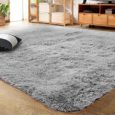 When winter is drawing near, it’s crucial to make the necessary preparations for your home, especially the plumbing. Depending on where you reside, it means ice, snow, and a significant drop in the temperature.
When winter is drawing near, it’s crucial to make the necessary preparations for your home, especially the plumbing. Depending on where you reside, it means ice, snow, and a significant drop in the temperature.
Although most look forward to the cold weather, it can damage the plumbing system in your home if you’re not ready. Always remember that water solidifies once it expands. If the temperature drops below freezing point, the piping is likely to freeze and, eventually, burst.
If you end up with a frozen, burst pipe, it can result in leaks and flooding in your home. These are issues you don’t want to experience during the winter. If you’re eager to know more about dependable plumbing service providers in Sydney, check out this link here.
Before winter comes in full swing, make sure that you’ll keep the plumbing ready. Here are several ways to winter-proof the plumbing system in your home:
1. Allow The Faucets To Drip
Although most find it wasteful, allowing the faucets to drip is an effective way to prevent the pipes from solidifying once the temperatures drop below freezing.
Prioritize the faucets along the exterior walls in your home. Switch the faucets on to create a minor yet continuous drip. A slow trickle of water is enough. Doing so eliminates any pressure between the faucets and ice, thus, lowering the chances of ending up with a burst pipe.
2. Insulate The Piping
When pipes run through areas without heating, such as the attic, crawl space, or garage, you can utilize a heat cable and cover it using pipe insulation. You can wrap the pipes in foam along with duct tape to secure them in place.
The pipe insulation alone won’t do so much since it’ll only take a short while for the cold air to reach the frozen pipes. If you’re insulating the lines without the heating cable, warm air can’t reach them.
The heat cables have an integral thermostat that monitors the pipe temperature, adjusting the heat as necessary to prevent the pipes from solidifying.
3. Switch Off The Outdoor Faucets
When you have outdoor faucets, it’s best to switch them off at their shutoff valves. Ensure that you’ll open the faucet, followed by the bleeder cap on the shutoff valve, to release any lingering water in the pipe.
If you forgot to drain the pipe, it’ll solidify and eventually crack. You can keep the bleeder cap open, but place a pail below it to catch any drip. In case the dripping continues, you need to replace the shutoff valve.
4. Disconnect Outdoor Hoses
Before winter arrives, you should disconnect the hoses outside.
When a hose still holds water and is left out during the winter, it’ll freeze. If the hose still connects to the faucet, the ice will likely move up into the pipe and your home, causing the pipe to burst. You have to disconnect all the hoses from the faucets, drain any leftover water, and store them properly.
5. Replace Plumbing Components In Poor Shape
As part of maintenance, you should inspect if the outdoor faucet handles are worn out or broken, if there are leaks or creaks in the pipes or fittings, or if the shutoff valves show signs of corrosion. When any component show signs of damage, corrosion, or deterioration, replace it right away before winter arrives.
6. Run Water Regularly
There are faucets in certain parts of the house that your household rarely uses. It might be a long time since you last turned on the water in the basement, or used the toilet or shower in a guest bedroom.
You likely have pipes and water valves in your home you seldom use. Although you can ignore these during the summer season, you should run water on these lines during the winter. When you run water regularly in all the pipes in your home, it prevents freezing.
7. Seal The Rim Joists Securely
One way to protect the plumbing is to seal around the rim joists since the site is likely for cold air to enter. It’s best to use expandable foam and provide insulation between the floor joists.
Inspect carefully around holes in which wires, cables, or pipes move through an exterior wall. Insulate as much as possible and securely seal drafts with expandable foam or caulk.
8. Open The Kitchen Cabinet Doors
The plumbing in the kitchen is at risk since it’s behind closed doors. Due to this, the heat from the rest of the house can’t reach them. You can prevent the pipes from solidifying by opening the kitchen cabinet doors to allow heat to circulate freely into the cabinets. Additionally, you can utilize a fan or portable heater that points inside the cabinet to improve the circulation of warm air.
Conclusion
Before the winter season arrives, your house should be ready, especially the plumbing system. You don’t want to end up with plumbing problems during the winter because you failed to provide proper insulation to your pipes. With these crucial tips to effectively winterize your home’s plumbing system, you can keep the plumbing in good shape and ready to face the cold weather.




